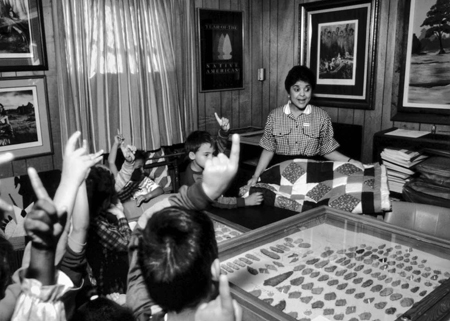Lumbee Indians
Part i: Introduction; Part ii: Theories of Lumbee Origins; Part iii: Discrimination and Injustice in the Nineteenth Century; Part iv: Lumbee Pursuit of Education, Civil Rights, and Self-Governance; Part v: The Fight for Federal Recognition; Part vi: Lumbee Language and Culture; Part vii: References
Part I: Introduction
 The Lumbee tribe, with 53,800 enrolled members, was in the early 2000s the largest of North Carolina's American Indian groups and the ninth-largest tribe in the United States. The Lumbee have been identified by a number of names during the history of their official relationship with the state of North Carolina. Native historians believe that the modern tribal name originates from the Lumber River, which traverses Robeson County and is an important historical, cultural, and spiritual symbol for many tribal members. Most Lumbees live in Robeson County and the adjacent counties of Cumberland, Hoke, and Scotland, and these counties are considered by the Lumbee Tribal Council to be the tribe's home territory, although there are also sizable communities of Lumbee people in Greensboro and elsewhere. Some Lumbees resided in the Bulloch County, Ga., area from 1890 through 1920. The Robeson County communities of Pembroke, Prospect, Union Chapel, Fairgrove, and Magnolia have long been predominantly Lumbee.
The Lumbee tribe, with 53,800 enrolled members, was in the early 2000s the largest of North Carolina's American Indian groups and the ninth-largest tribe in the United States. The Lumbee have been identified by a number of names during the history of their official relationship with the state of North Carolina. Native historians believe that the modern tribal name originates from the Lumber River, which traverses Robeson County and is an important historical, cultural, and spiritual symbol for many tribal members. Most Lumbees live in Robeson County and the adjacent counties of Cumberland, Hoke, and Scotland, and these counties are considered by the Lumbee Tribal Council to be the tribe's home territory, although there are also sizable communities of Lumbee people in Greensboro and elsewhere. Some Lumbees resided in the Bulloch County, Ga., area from 1890 through 1920. The Robeson County communities of Pembroke, Prospect, Union Chapel, Fairgrove, and Magnolia have long been predominantly Lumbee.
Keep reading > Part II: Theories of Lumbee Origins ![]()
1 January 2006 | Stilling, Glenn Ellen Starr